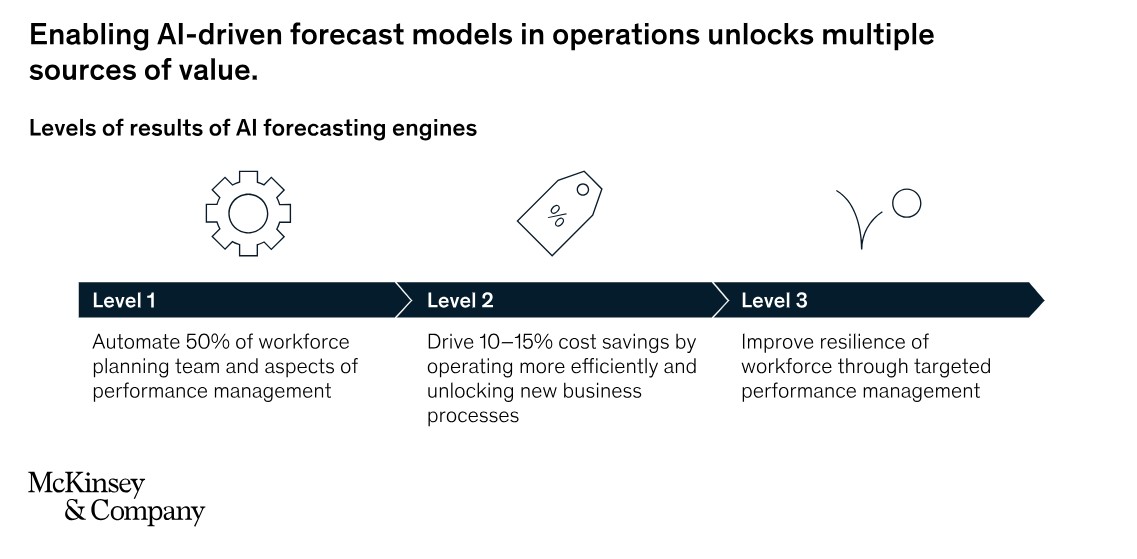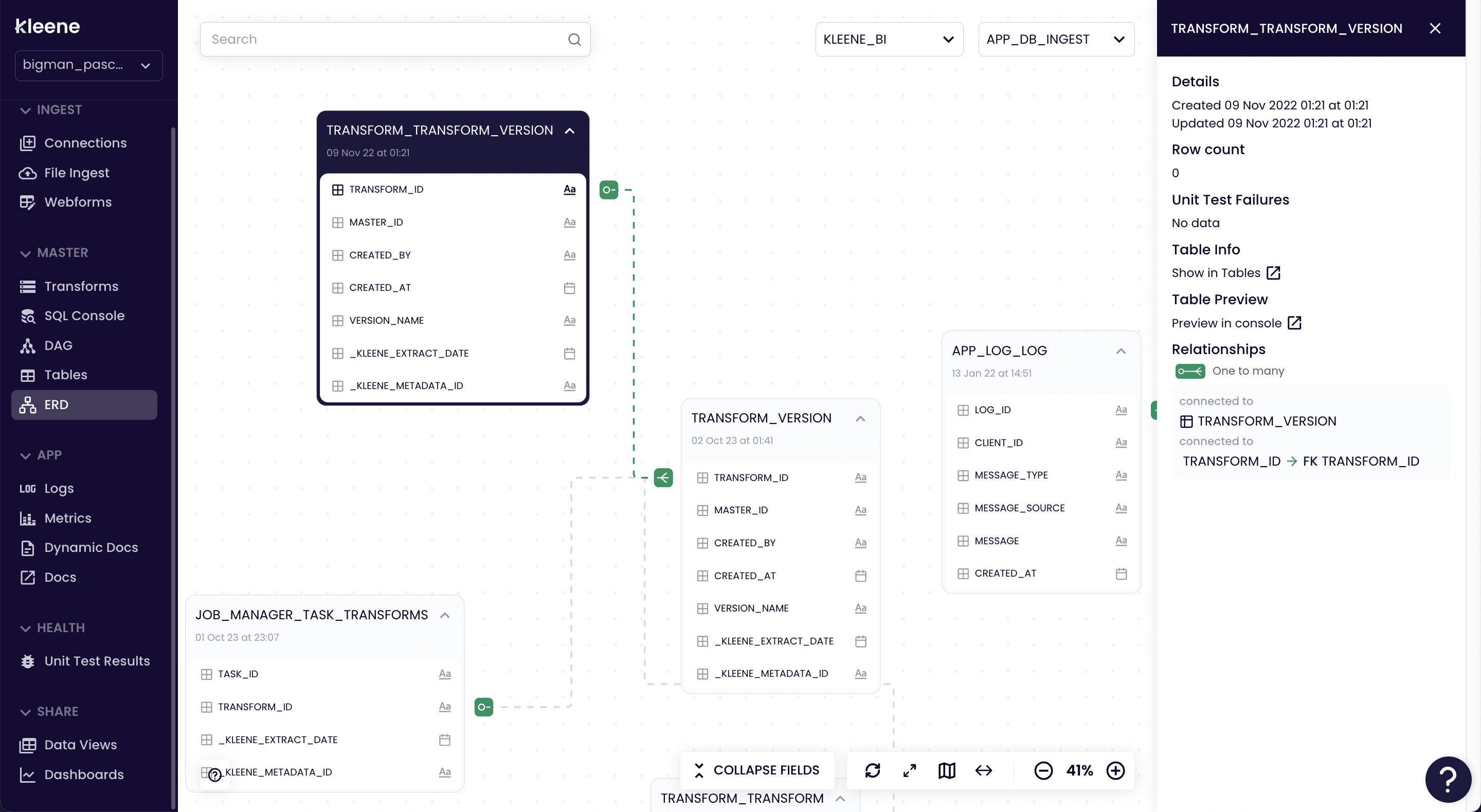In a marketplace defined by rapid shifts and mounting consumer demands, retail businesses find themselves striving to maintain a seamless inventory management process. Given this challenges, integrating data intelligence into inventory optimisation is not just a trend but a necessity, offering ways to boost profitability and enhance efficiency in operations. According to a study by McKinsey, implementing AI-driven forecasting in supply chain management can diminish errors by 20 to 50 percent, thereby reducing lost sales and product unavailability by up to 65 percent, while also potentially lowering warehousing costs by 5 to 10 percent.
In this article we will explore how retailers can employ data analytics platforms like Kleene.ai to extract actionable insights, streamline their inventory strategies, and achieve these significant gains.

Capitalising on Data Intelligence in traditional Inventory Optimisation initiatives
Demand Forecasting
Forecasting demand in today’s fast-paced market can be daunting, yet it remains a fundamental aspect of business strategy. While historical data serves as a critical starting point, it has become increasingly clear that relying solely on past trends is no longer sufficient to isolate and predict the nature of future market movements with accuracy. The integration of modern data analytics tools has orchestrated a significant paradigm shift, allowing retailers and businesses to assimilate and scrutinize data from a vast array of diverse sources. This approach unveils a more detailed and granular view of market dynamics, offering insights that were previously unattainable.
These powerful tools delve deep into the intricacies of consumer behavior, mapping out emerging trends and adjusting forecasts in real-time based on a multitude of factors, including seasonal variations and meteorological patterns that can significantly influence consumer purchasing decisions. The ability to forecast demand with such precision directly impacts inventory optimisation, ensuring that businesses maintain the right level of stock to meet demand without overstocking or understocking.
Inventory optimisation becomes increasingly critical as businesses strive to balance the cost of holding inventory with the need to meet customer expectations. By leveraging advanced demand forecasting tools, companies can more accurately predict the quantity of products required during specific periods, reducing excess inventory and minimizing the risk of stockouts. This not only improves cash flow but also enhances the overall efficiency of the supply chain.
Moreover, these analytics tools play a pivotal role in monitoring and adapting to supply chain disruptions, which have become more frequent in today’s volatile market. By continuously analyzing data, businesses can anticipate potential disruptions and adjust their inventory levels accordingly, further refining their inventory optimisation strategies. This proactive approach helps to maintain a seamless flow in manufacturing, order fulfillment, and logistics, ensuring that customer needs are met even in the face of unexpected challenges.
Ultimately, the profound understanding derived from sophisticated demand forecasting and inventory optimisation tools facilitates more streamlined and efficient management across various business elements. It paves the way for agile, data-driven decision-making processes that align closely with real-time market demands. By staying ahead of the curve, businesses can not only enhance their operational efficiency but also strengthen their competitive edge in an increasingly dynamic marketplace.
ABC Analysis
ABC Analysis, a conventional method rooted in dissecting past sales data, often falls short when tasked with forecasting the ever-changing market behaviors that characterize today’s retail landscape. This traditional approach, while useful in categorizing inventory based on historical value and turnover, is increasingly inadequate for anticipating future demand and adapting to the complexities of modern markets. To address these shortcomings, AI-powered analytics programs have become indispensable, offering the depth and foresight needed to navigate dynamic market landscapes with agility and precision.
By harnessing the potential of artificial intelligence, these advanced programs go beyond simply analyzing historical data. They integrate a wide range of current data sources, including real-time market trends, consumer feedback, and competitive analysis, creating a more comprehensive and accurate understanding of market dynamics. This innovative synergy between AI and data transforms ABC Analysis from a static, retrospective tool into a dynamic, forward-looking strategy that aligns closely with modern business needs.
The enhanced insights provided by AI-driven analytics significantly improve inventory optimisation. By prioritizing products based on their profitability, popularity, and current market conditions, businesses can make more informed inventory management decisions. This ensures that high-priority items are always adequately stocked, reducing the risk of stockouts, while also preventing the overstocking of less critical items. Such precision in inventory optimisation not only enhances operational efficiency but also maximizes profitability by aligning inventory levels with actual market demand.
Furthermore, AI-powered ABC Analysis helps businesses allocate resources more effectively by focusing on products that deliver the highest returns. This prioritization enables more strategic investments in marketing, production, and logistics, ensuring that resources are concentrated on high-impact areas. In this way, businesses can optimize their inventory and resource management in tandem, driving better outcomes across the board.
While traditional ABC Analysis has its limitations, the integration of AI-powered analytics breathes new life into this classic approach. By enhancing inventory optimisation and enabling more strategic resource allocation, these advanced tools empower businesses to stay competitive and responsive in today’s fast-paced retail environment.
Predictive Analytics to Identify Supply Chain Risks
Predictive analytics emerges as a powerful ally for businesses in this domain, offering an advanced framework to proactively manage and mitigate risks. By utilizing sophisticated algorithms and machine learning techniques, predictive analytics provides a crystal-clear foresight, enabling the anticipation of potential hiccups well before their onset, fostering a culture of preparedness and resilience.
These analytical tools work tirelessly to monitor various factors that can influence the supply chain, from geopolitical events to environmental fluctuations, offering actionable insights that facilitate the development of robust contingency plans. This strategy ensures a swift and proactive response to disruptions, thereby safeguarding the supply chain’s integrity and fluidity. In this way, businesses can maintain a steady flow of operations, preventing costly downtimes and safeguarding customer trust and satisfaction. Predictive analytics, therefore, forms the backbone of a resilient supply chain, poised to adapt and thrive in the face of unforeseen challenges, securing not only the present but paving the way for a sustainable, successful future.
As the demand for improved forecasting accuracy grows, a increasing number of companies are turning to advanced AI models to improve their decision making process. These models have evolved to analyse and learn from historical trends, demonstrating documented and clear-cut value in enhancing prediction precision.

Overcoming Challenges in Implementing Data Analytics for Inventory Optimsation
Venturing into the realm of data analytics comes with its set of hurdles, from data silos to collaboration bottlenecks.
Let’s have a look at some of them.
Siloed Data
One of the primary challenges is the prevalence of siloed data, where valuable information is trapped in separate systems, making it almost impossible to gain a comprehensive view. Centralizing data repositories can be a solution to this, fostering seamless integration and analysis. This is why implementing a single source of truth is the foundation of any data initiatives.
Handling Unstructured and Semi-Structured Data
Retailers face the significant task of managing unstructured and semi-structured data deriving from varied sources like social media, supply chain, sales etc.. Traditional data solutions are both complex and costly, urging modern businesses to seek new means to extract valuable insights from this type of data, ways that allow to extract essential metrics such as customer sentiment, purchasing intent, churn risk.
Knowledge Gap in Formulating Value-Driven Initiatives
Another significant challenge is the lack of requisite knowledge to develop initiatives that truly drive value. This gap can act as a roadblock, preventing the full exploitation of the potential that data analytics holds in optimizing inventory.
This barrier often comes from insufficient expertise in leveraging intricate data analytics tools and translating large amount of data coming from multiple sources into actionable strategies. The inability to leverage this data optimally can make it difficult the realization of data-centric benefits, creating missed opportunities for innovation and growth. Thus, bridging this gap is pivotal, necessitating guidance and tools that facilitate the seamless transition from insights to strategic actions.
Kleene.ai: Your Partner in Gaining AI-driven Actionable Insights
Kleene.ai stands as a vanguard in this space, offering a platform that not only addresses these challenges but offers actionable insights through predictive analytics. Our customizable, plug-and-play apps are developed with inputs from hundreds of retail companies, ensuring immediate value from data initiatives. Kleene.ai helps in bridging the knowledge gap, fostering the creation of value-driven initiatives. The platform allows organizations to fully unlock the potential of data analytics, transforming insights into strategic actions that elevate inventory management effectiveness.
In conclusion, data analytics is becoming an integral player in the evolving domain of inventory management, promising a future of increase efficiency and precision. As retailers navigate this transformative pathway, collaborating with Kleene.ai can equip them with the necessary tools and guidance to unlock the vast potential that data analytics promises. Together, we aspire to redefine inventory management from a standard business process to a strategic asset, fostering organizational growth and increased customer satisfaction.
Want to learn more? there are three other ways you can get value from Kleene.ai:
- Download our “A Step-By-Step Guide to Getting From Raw Data to Decision Intelligence” eBook
- Watch our free on demand webinar with Swoon, to discover how they leveraged data for strategic growth
- Book a call with an expert and learn how retailers are achieving automated decision intelligence https://kleene.ai/talk-to-an-expert/



